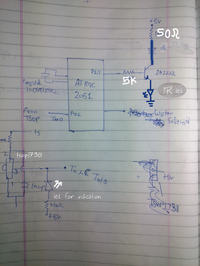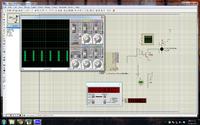lucky6772
Junior Member level 2
Hi guys
I am making automatic urinal flush system. I need to dect a person for dat.! I am using tsop1738 for detecting ir signal.! I m generating 38kHz frequency from microcontroller n transmiting it through ir led but I am not getting good range I need at 4ft but the only range m getting is 8cm approx..! I hace chcked the microcontroller at89c2051 is genrating perfect 38khz carrier continuously!!i hv also tried some amplification circuit using transistors 2n2222 but problem is still same..! Help me guys what nexy should I do..!:-(
I am making automatic urinal flush system. I need to dect a person for dat.! I am using tsop1738 for detecting ir signal.! I m generating 38kHz frequency from microcontroller n transmiting it through ir led but I am not getting good range I need at 4ft but the only range m getting is 8cm approx..! I hace chcked the microcontroller at89c2051 is genrating perfect 38khz carrier continuously!!i hv also tried some amplification circuit using transistors 2n2222 but problem is still same..! Help me guys what nexy should I do..!:-(


